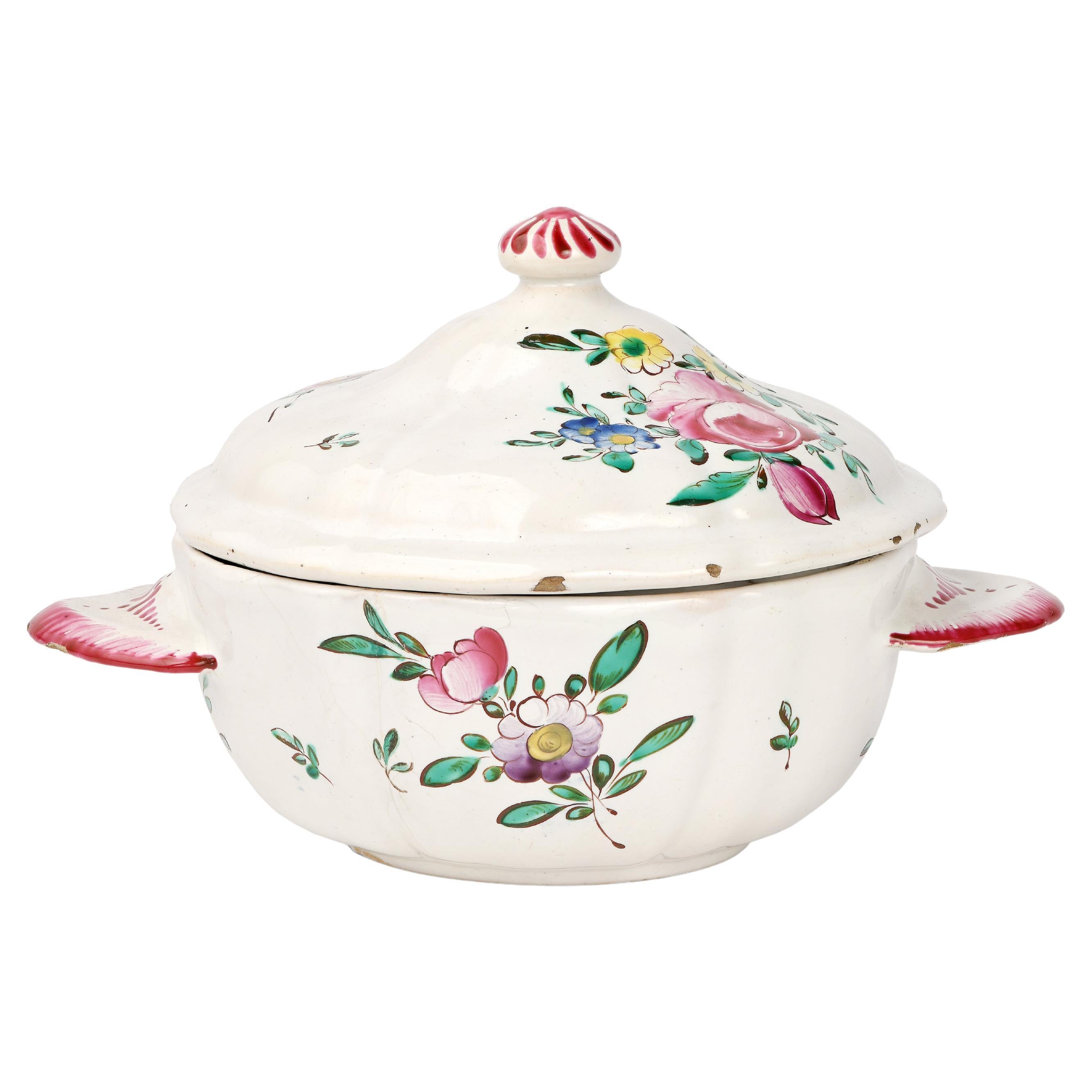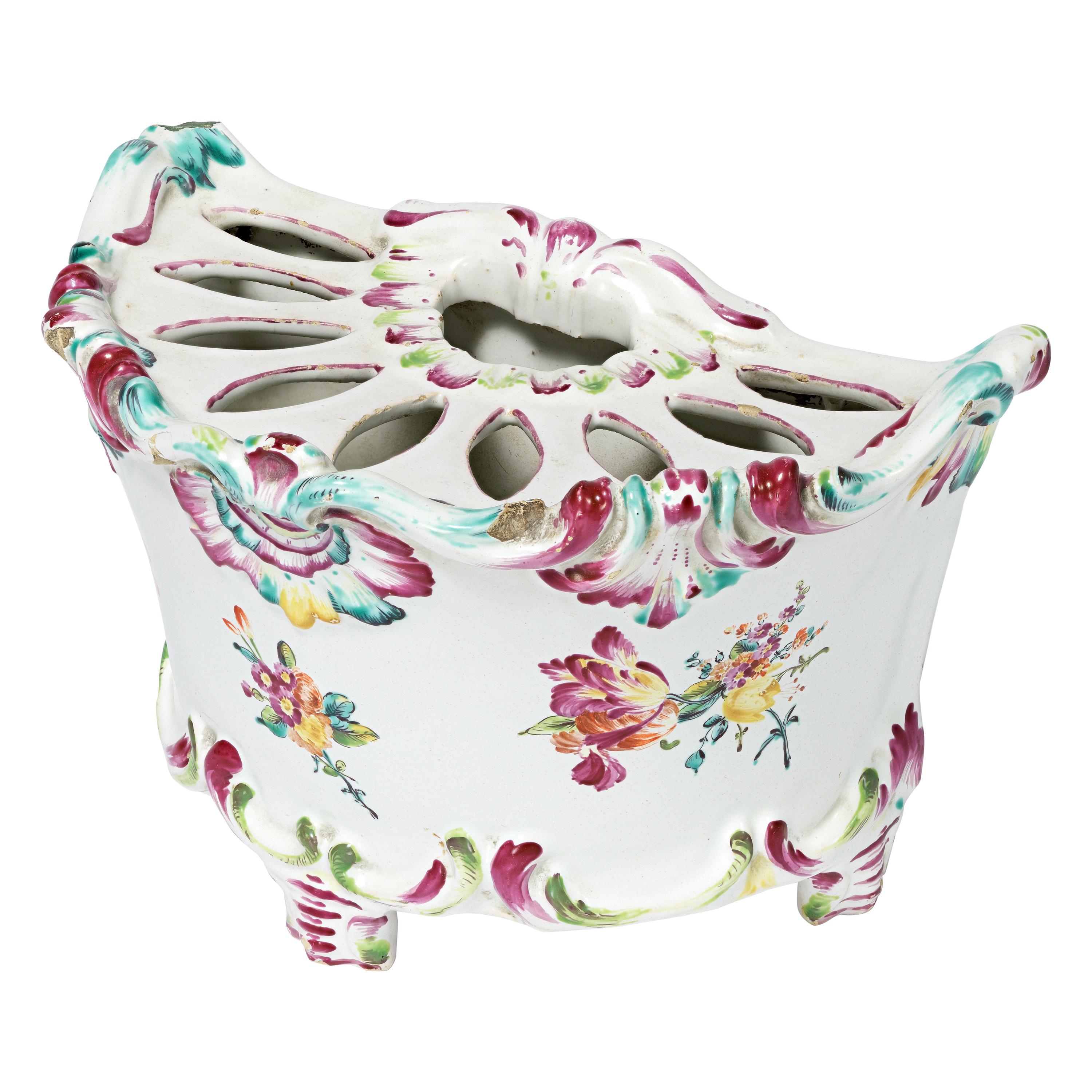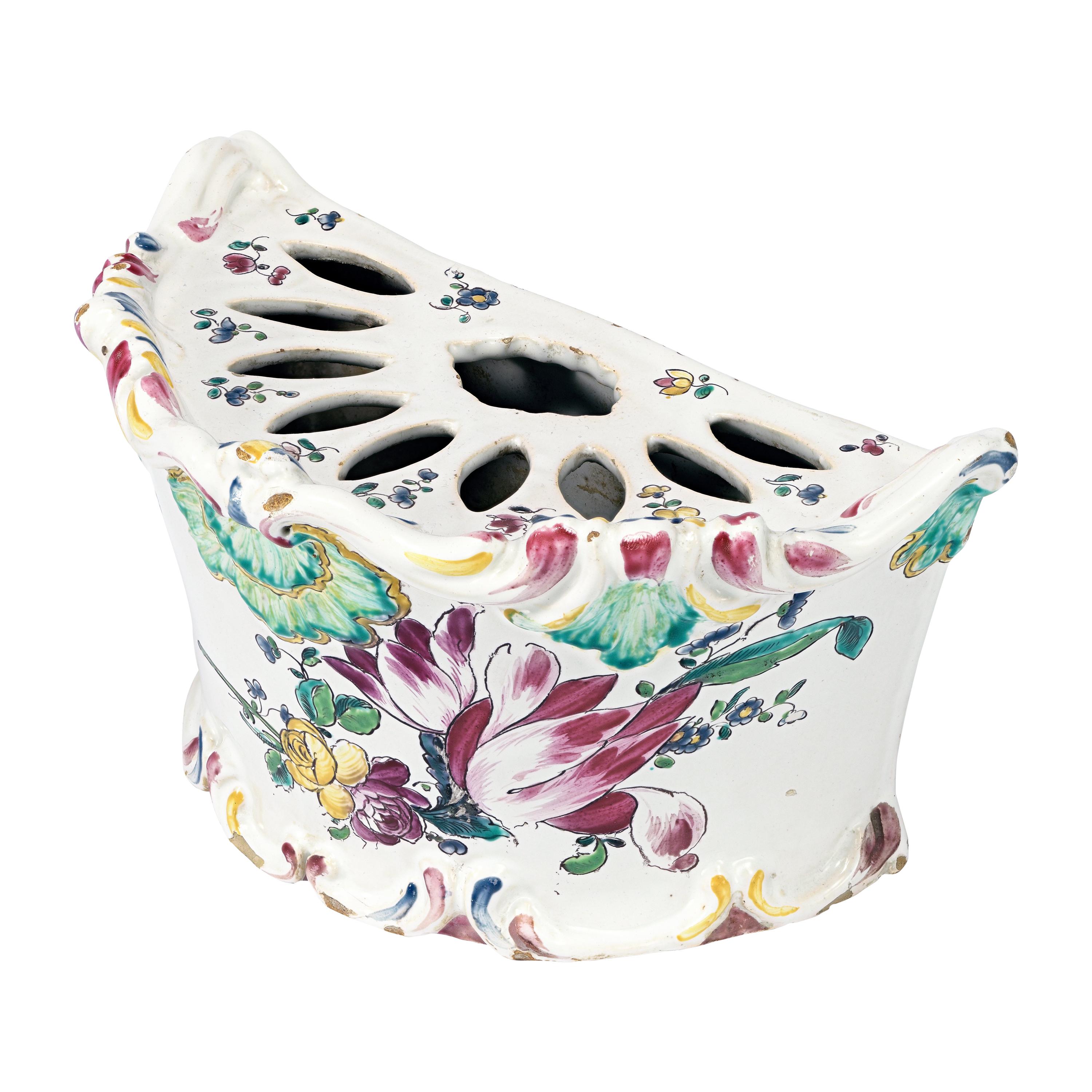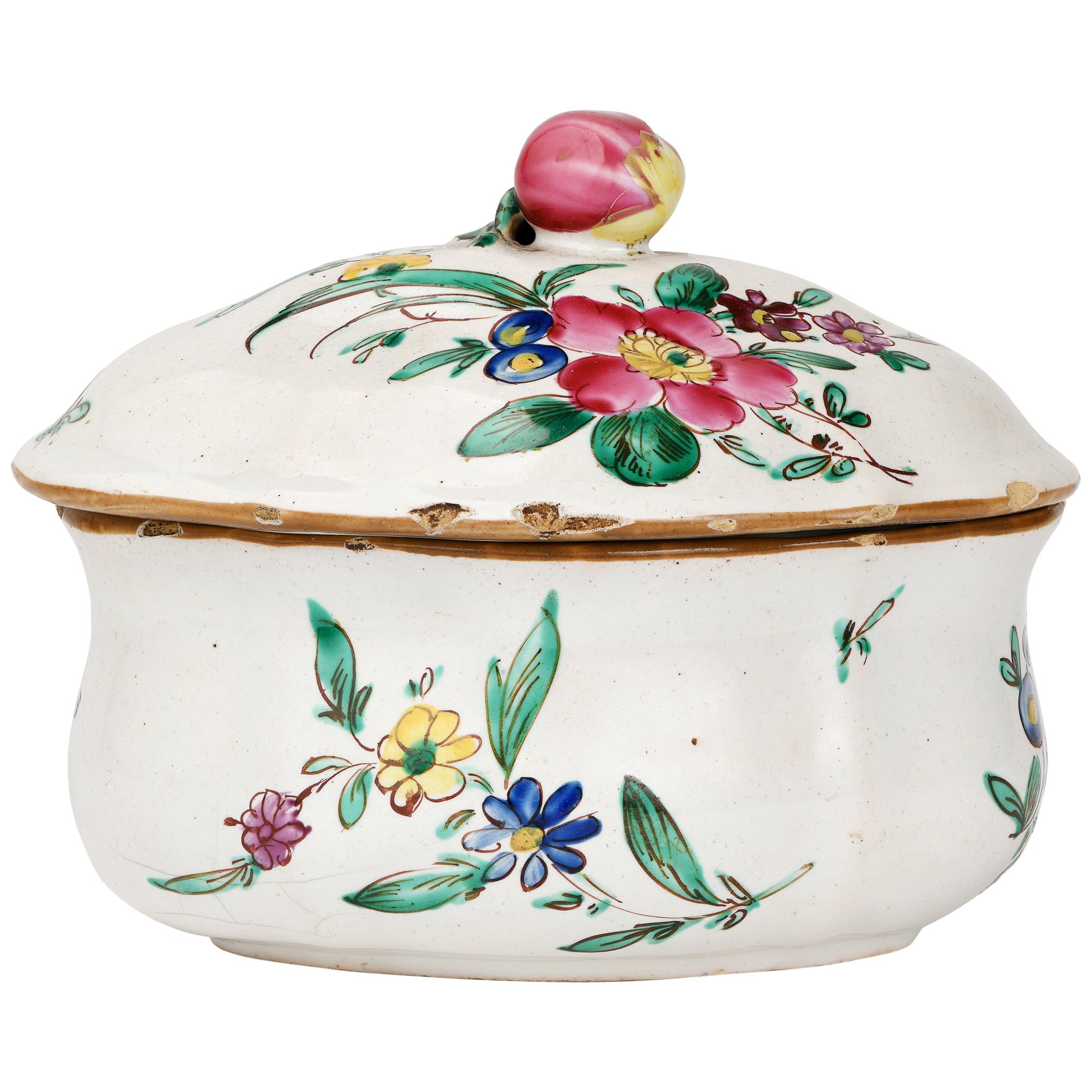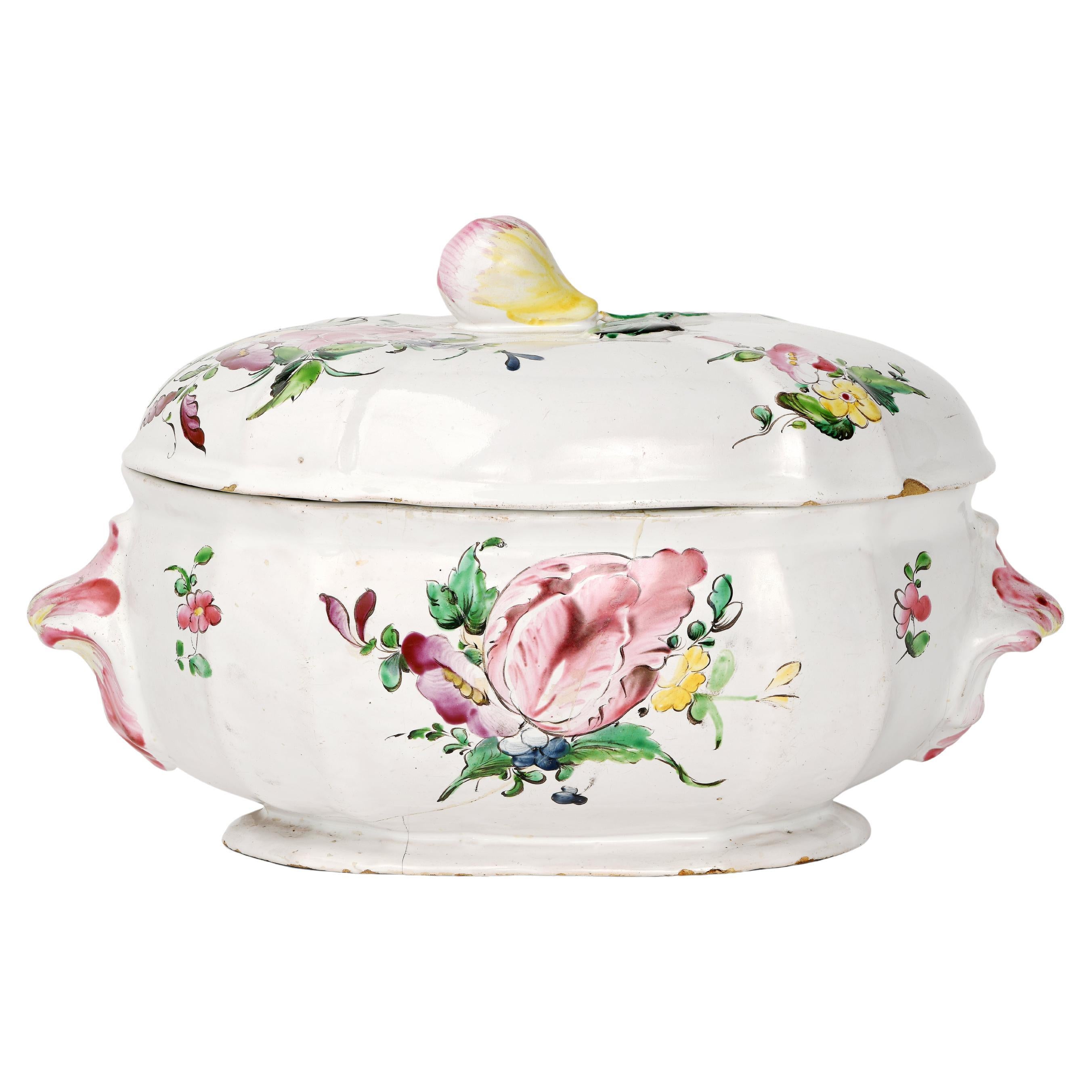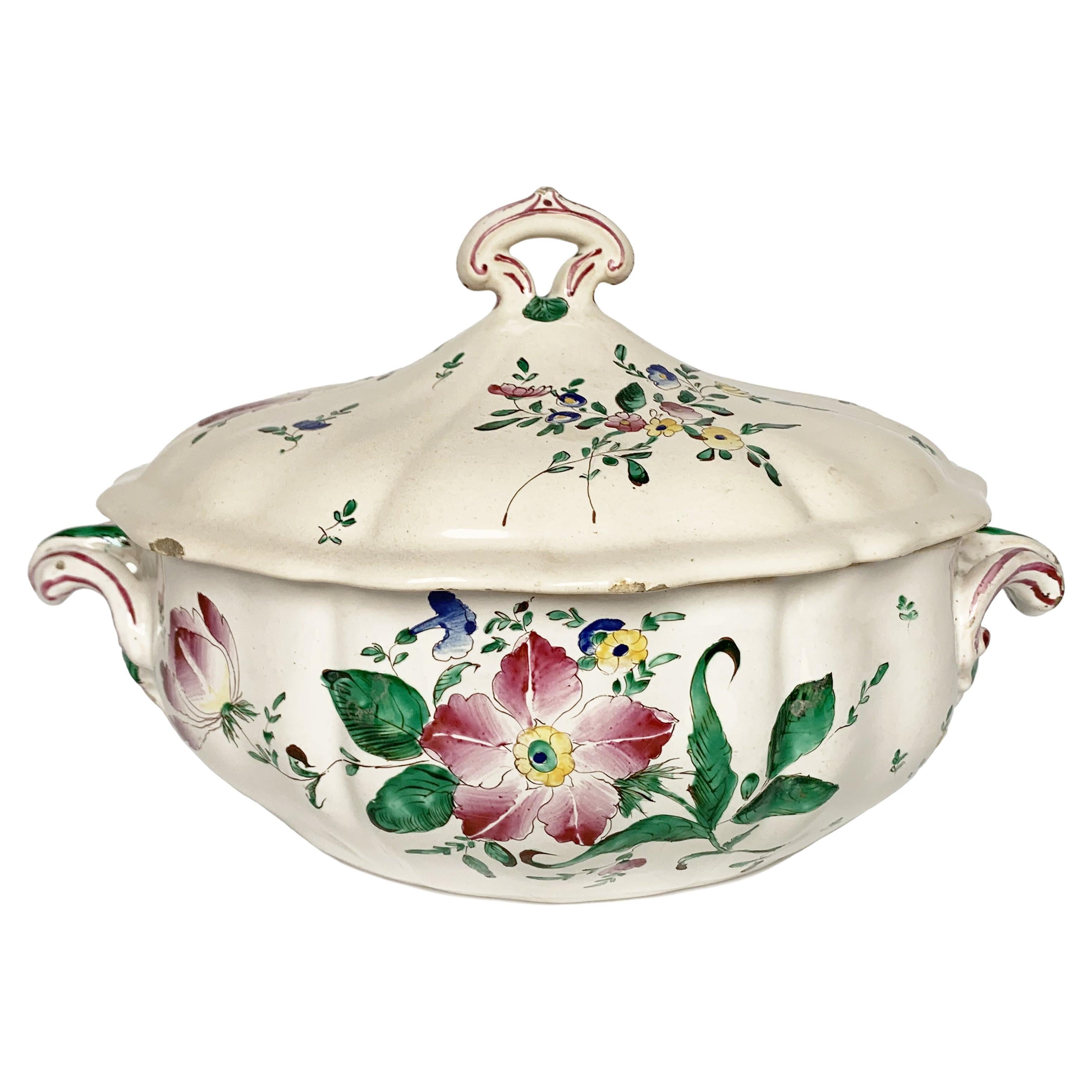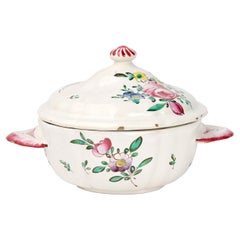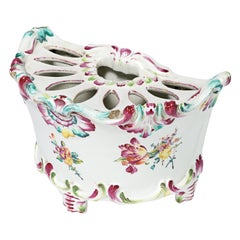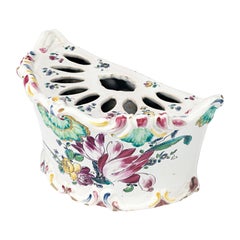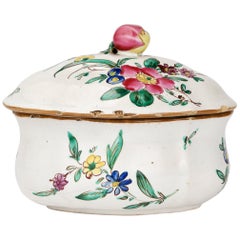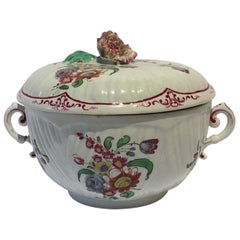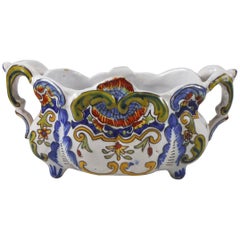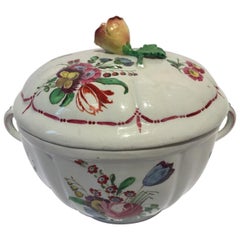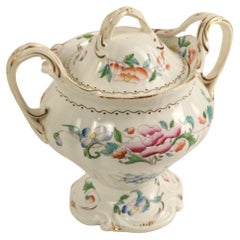Items Similar to Ancient Maiolica Cup, Rubati Manufacture, Milan, Circa 1770 - 1780
Video Loading
Want more images or videos?
Request additional images or videos from the seller
1 of 15
Ancient Maiolica Cup, Rubati Manufacture, Milan, Circa 1770 - 1780
$3,594.43
£2,675.32
€3,000
CA$4,923.47
A$5,475.98
CHF 2,859.38
MX$66,636.79
NOK 36,518.70
SEK 34,248.10
DKK 22,837.95
Shipping
Retrieving quote...The 1stDibs Promise:
Authenticity Guarantee,
Money-Back Guarantee,
24-Hour Cancellation
About the Item
Sick cup
Pasquale Rubati Manufacture
Milan, Circa 1770 - 1780
Maiolica decorated in polychrome “a piccolo fuoco” (third fire)
It measures: h 2.36 x 7.4 x 7.87 (h 6 x 19 x 20 cm)
It weighs: 6.17 lb (28 g)
State of conservation: the cup is intact except for a few very thin cracks due to heat on the basin.
Maiolica and porcelain production in the eighteenth century belonged mainly to the great royal families or in any case to the noble families who made the manufacture of ceramic works a source of prestige. In Milan, under Maria Teresa of Austria, the time period witnessed a real opening to new industrialists who, by virtue of the privatizations granted by the government, assumed a real business risk, giving life, albeit not without conflict, to flourishing factories and to production which was among the most elegant and most requested at the moment and which still today remains object of collection.
In Milan in the 18th century, two majolica factories were active. The first was that of Felice Clerici, from 1745, and the second was opened by Pasquale Rubati in 1756, in competition with Felice, for whom he had been a worker. Upon Rubati's death, in 1796, the enterprise was continued for a few years under his son Carlo.
This hemispherical cup, with slight pods and a wavy edge, rests on a low and flat foot. On the sides, just below the mixtilinear edge, there are two horizontal handles which are decorated in relief. On the front, half of the cup is partially closed and, in the lower part of the cup, there is a long spout which curves upwards. This is the typical shape of sick cups: it facilitated the intake of liquids for those who were confined to bed and prevented the contents spilling.
There are polychrome flowers arranged along the body and the decoration of the cover depicts a flower bouquet with a tulip in the center, accompanied by small four petal blue and yellow florets and a sprig of yellow and blue. Some semis of flowers, with two-tone blue and purple petals, scatter leaves on the remaining surface to complete the decoration. The motif, expertly traced within thin manganese outlines, differs from that more commonly known as "alla rosa contornata"( “to the contoured rose”) or "alla vecchia Lodi" (“in old Lodi style”), precisely by virtue of the presence of small multicolored florets. It constitutes one of the most elegant ornamental styles offered by the Milanese Pasquale Rubati manufacture during the 18th century.
In 1760 the innovative “a piccolo fuoco” (third fire) technique expanded the ornamental repertoire with Saxon-inspired floral themes and produced works which could commercially compete with the German porcelains whose most renowned offerings included the naturalistic Deutsche Blumen.
This choice of decoration, which had represented a strong point of the Lodi Ferretti factory, is here elaborated by Pasquale Rubati with results very similar to those obtained by painting on porcelain.
Pasquale Rubati was originally from Lodi, where he had worked at the Rossetti factory. Later he moved, first to Turin and then to Milan, where he is reported among the painters of the Clerici manufacture. Subsequently, he left this factory to open his own. Despite having been accused by Clerici of taking away from his manufacture "the secrets of the colors", that is to say the recipes of the “a piccolo fuoco” (third fire) colors, Pasquale Rubati distinguished himself through his extraordinary talent as a painter and the quality of his works. Indeed, the refinement of the decorations often successfully competed with porcelain.
The cup was published in the 1960's as a work of Lodi production and has only recently been ascribed to be a work similar to others of Rubati manufacture (S. Levy, Maioliche settecentesche lombarde e venete, Milano 1962, tav. 204, e A. Novasconi, S. Ferrari, S. Corvi, La ceramica lodigiana, Lodi 1964, p. 230-231).
Bibliography
S. Levy, Maioliche settecentesche lombarde e venete, Milano 1962, tav 204;
Gregorietti, Maioliche di Lodi, Milano e Pavia (catal.), Milano 1964, p. 17;
A. Novasconi, S. Ferrari, S. Corvi, La ceramica lodigiana, Lodi 1964, p. 230-231O. Ferrari - G. Scavizzi, Maioliche italiane del Seicento e del Settecento, Milano 1965;
M. A. Zilocchi, in Settecento lombardo, Milano 1991;
R. Ausenda (a cura di), Musei e Gallerie di Milano. Museo d’Arti Applicate. Le ceramiche. Tomo secondo, Milano 2000.
- Creator:Pasquale Rubati (Manufacturer)
- Dimensions:Height: 2.37 in (6 cm)Width: 7.49 in (19 cm)Depth: 7.88 in (20 cm)
- Style:Rococo (Of the Period)
- Materials and Techniques:Maiolica,Glazed
- Place of Origin:
- Period:1770-1779
- Date of Manufacture:circa 1770-1780
- Condition:The cup is intact except for a few very thin cracks due to heat on the basin.
- Seller Location:Milano, IT
- Reference Number:1stDibs: LU4352227500962
About the Seller
4.3
Vetted Professional Seller
Every seller passes strict standards for authenticity and reliability
Established in 1860
1stDibs seller since 2018
21 sales on 1stDibs
Associations
International Confederation of Art and Antique Dealers' Associations
- ShippingRetrieving quote...Shipping from: Milano, Italy
- Return Policy
Authenticity Guarantee
In the unlikely event there’s an issue with an item’s authenticity, contact us within 1 year for a full refund. DetailsMoney-Back Guarantee
If your item is not as described, is damaged in transit, or does not arrive, contact us within 7 days for a full refund. Details24-Hour Cancellation
You have a 24-hour grace period in which to reconsider your purchase, with no questions asked.Vetted Professional Sellers
Our world-class sellers must adhere to strict standards for service and quality, maintaining the integrity of our listings.Price-Match Guarantee
If you find that a seller listed the same item for a lower price elsewhere, we’ll match it.Trusted Global Delivery
Our best-in-class carrier network provides specialized shipping options worldwide, including custom delivery.More From This Seller
View AllItalian Maiolica Cup Ferretti Lodi, circa 1770 - 1780
By Antonio Ferretti
Located in Milano, IT
Maiolica puerperal cup
Antonio Ferretti Manufacture
Lodi, Circa 1770 - 1780
Maiolica polychrome decorated “a piccolo fuoco” (third fire).
It measures: 4.3 x 6.8 x 5.3 in (11 x 17,5 x 13,5 cm)
Weight: 0.78 lb (358 g)
State of conservation: some closed pass-through fêlures on the cup, barely visible on the outside. Some use chips on the edge of the lid, two of which are more marked.
From about the mid-sixteenth century, the puerperal soup tureen or puerperal cup became one of the most popular wedding gifts in central Italy. As an auspicious symbol, it replaced the birth table (“desco da parto”) which, on the occasion of high-ranking marriages, from the thirteenth century, had been painted by famous artists, especially in Tuscany.
In France this same tureen is called "écuelle de mariée", as it is given to spouses as a sign of fertility.
During the eighteenth century this custom spread even outside Italy to all social levels. Depending on availability and rank, it was made of different materials: precious metals, maiolica, porcelain, glass, pewter, etc.
Beginning in the mid-twentieth century, the custom of this symbolic homage gradually disappeared, although famous designers such as Gio Ponti and Giuseppe Gariboldi, even as recently as the 1940s, revisited a model of a small puerperal soup bowl for the Ginori and, also in Italy in 1940, in a national competition for young potters, one of the themes of the test was indeed a modern model of a puerperal cup as an auspicious gift.
This particular cup was also called a "service cup" or "puerperal vase" or "stuffed cup" - the windows were sealed with straw to prevent drafts of air for women in labor.
In the eighteenth century the line of the puerpera cup was simplified, so much so that it took the form of a small tureen with two handles - the typical broth cup...
Category
Antique 1770s Italian Rococo Ceramics
Materials
Maiolica
Rococo Italian Maiolica Flower Pot Pasquale Rubati, Milano, 1770 circa
By Pasquale Rubati
Located in Milano, IT
Maiolica flower pot “a mezzaluna” with support feet
decorated with little bunches of flowers
Pasquale Rubati Factory
Milan, circa 1770
5.5 in X ...
Category
Antique 1770s Italian Rococo Ceramics
Materials
Maiolica
Ancient Maiolica Flower Pot Pasquale Rubati Factory, Milan Circa 1770
By Pasquale Rubati
Located in Milano, IT
Maiolica flower pot “a mezzaluna” decorated with tulip
Pasquale Rubati Factory
Milan, circa 1770.
Measures: 4.7 in x 4.7 in x 8.6 in
12 cm x 12...
Category
Antique 1770s Italian Rococo Ceramics
Materials
Maiolica
Italian Maiolica Ancient Sugar Bowl, Lodi, 1770-1780
By Antonio Ferretti
Located in Milano, IT
Maiolica sugar bowl
Antonio Ferretti Manufacture
Lodi, Circa 1770-1780
Maiolica polychrome decorated “a piccolo fuoco” (third fire).
It measures 3.54 x 4.52 x 3.54 in (9 x 11,5 x 9 cm)
Weight: 0.394 lb (0.179 kg)
State of conservation: small and slight chips on the edges.
The small sugar bowl has a swollen and ribbed body resting on a flat base. The cap-shaped lid follows the rib of the container and is topped with a small knob in the shape of a two-colored fruit.
The sugar bowl is painted “a piccolo fuoco” (third fire) with the characteristic floral motif of bunches and isolated semis.
An example which closely corresponds to this one is kept at the Civic Museum in Lodi (G. Gregorietti, Maioliche di Lodi, Milano e Pavia, Catalogo della Mostra, Milano, 1964 n. 137).
This decorative style represented a strong point of the Lodi factory, which established itself thanks to the vivid nature of the colors made possible by the introduction of a new technique perfected by Paul Hannong in Strasbourg and later introduced by Antonio Ferretti to Italy. The production process, called “piccolo fuoco” (third fire), allowed the use of a greater number of colors than in the past; in particular, the purple of Cassius, a red made from gold chloride, was introduced. Its use allowed for many more tones and shades, from pink to purple.
The Ferretti family started their maiolica manufacturing business in Lodi in 1725.
The forefather Simpliciano started the business by purchasing an ancient furnace in 1725 and, indeed, we have evidence of the full activity of the furnaces starting from April of the same year (Novasconi-Ferrari-Corvi, 1964, p. 26 n. 4). Simpliciano started a production of excellence also thanks to the ownership of clay quarries in Stradella, not far from Pavia. The production was so successful that in 1726 a decree of the Turin Chamber came to prohibit the importation of foreign ceramics, especially from Lodi, to protect internal production (G. Lise, La ceramica a Lodi, Lodi 1981, p. 59).
In its initial stages, the manufacture produced maolicas painted with the “a gran fuoco” (double fire) technique, often in turquoise monochrome, with ornamentation derived from compositional modules in vogue in Rouen in France. This was also thanks to the collaboration of painters like Giorgio Giacinto Rossetti, who placed his name on the best specimens next to the initials of the factory.
In 1748 Simpliciano made his will (Gelmini, 1995, p. 30) appointing his son Giuseppe Antonio (known as Antonio) as universal heir. After 1750, when Simpliciano passed away, Antonio was directly involved in the maiolica factory, increasing its fortunes and achieving a reputation on a European level. Particularly important was the aforementioned introduction in 1760 of the innovative “a piccolo fuoco” (third fire) processing, which, expanding the ornamental repertoire with Saxon-inspired floral themes, was able to commercially compete with the German porcelains that had one of its most renowned offerings in the naturalistic Deutsche Blumen. Antonio Ferretti understood and promoted this technique and this decoration, proposing it in a fresher and more corrective version, less linked to botanical tables, both with or without contour lines, as well as in purple or green monochrome. After efforts to introduce more industrial production techniques to the sector succeeded, even the Ferretti manufacture, in the last decade of the eighteenth century, started heading towards decline despite its attempts to adapt production to neoclassical tastes.
In 1796 the Napoleonic battle for the conquest of the Lodi bridge over the Adda definitively compromised the furnaces. Production resumed, albeit in a rather stunted manner, until Antonio's death on 29 December 1810. (M. L. Gelmini, pp. 28-30, 38, 43 sgg., 130-136 (for Simpliciano); pp. 31 sgg., 45-47, 142-192 (for Antonio).
Bibliography
G. Gregorietti, Maioliche di Lodi Milano e Pavia Catalogo della Mostra, Milano, 1964 n. 137;
C. Baroni, Storia delle ceramiche nel Lodigiano, in Archivio storico per la città e i comuni del circondario e della diocesi di Lodi, XXXIV (1915), pp. 118, 124, 142; XXXV (1916), pp. 5-8;
C. Baroni, La maiolica antica di Lodi, in Archivio storico lombardo, LVIII (1931), pp. 453-455;
L. Ciboldi, La maiolica lodigiana, in Archivio storico lodigiano, LXXX (1953), pp. 25 sgg.;
S. Levy, Maioliche settecentesche lombarde e venete, Milano 1962, pp. 17 sgg.;
A. Novasconi - S. Ferrari - S. Corvi, La ceramica lodigiana, Lodi 1964, ad Indicem; Maioliche di Lodi, Milano e Pavia (catal.), Milano 1964, p. 17;
O. Ferrari - G. Scavizzi, Maioliche italiane del Seicento e del Settecento, Milano 1965, pp. 26 sgg.;
G. C. Sciolla, Lodi. Museo civico, Bologna 1977, pp. 69-85 passim; G. Lise, La ceramica a Lodi, Lodi 1981;
M. Vitali, in Storia dell'arte ceramica...
Category
Antique 1770s Italian Rococo Ceramics
Materials
Maiolica
Italian Maiolica Tureen, Rubati Manufacture, Milan, circa 1770-1780
By Pasquale Rubati
Located in Milano, IT
Maiolica tureen
Pasquale Rubati Manufacture
Milan, circa 1770 - 1780
Maiolica polychrome decorated “a piccolo fuoco” (third fire).
It measures 6.69 in x 11,02 x 8.26 (17 x 28 x ...
Category
Antique 1770s Italian Rococo Ceramics
Materials
Maiolica
Ancient Maiolica Tureen Ferretti Manufacture, Lodi, Circa 1770 - 1780
By Antonio Ferretti
Located in Milano, IT
Maiolica tureen
Antonio Ferretti Manufacture
Lodi, Circa 1770 - 1780
Maiolica polychrome decorated “a piccolo fuoco” (third fire).
It measures 9.06 in in height x 13.39 in x 9.84 i...
Category
Antique 1770s Italian Rococo Soup Tureens
Materials
Maiolica
You May Also Like
Italy 18th Century Richard Ginori Porcelain Covered Cup with Floral Drawings
By Richard Ginori
Located in Brescia, IT
This fine and elegant covered cup in Baroque style, is a piece hand made by the well known Italian factory Richard Ginori in Doccia. The set is composed by two pieces: the cup and th...
Category
Antique Mid-18th Century Italian Baroque Porcelain
Materials
Porcelain
$1,725 Sale Price
20% Off
Free Shipping
French Faience Jardiniere Desvres, circa 1900
By Desvres
Located in Austin, TX
French Desvres faience jardinière painted with flowers, circa 1900. Marked on base.
Minor wear.
Category
Antique Early 1900s French French Provincial Planters, Cachepots and Jar...
Materials
Faience
Italy 18th Century Richard Ginori Porcelain Covered Cup or Sugar Bowl
By Richard Ginori
Located in Brescia, IT
This fine and elegant covered cup in Baroque style, is a piece hand made by the well known Italian factory Richard Ginori in Doccia. The set is composed by two pieces: the cup and th...
Category
Antique Mid-18th Century Italian Baroque Porcelain
Materials
Porcelain
$1,725 Sale Price
20% Off
Free Shipping
Hand-Painted Porcelain Sugar Bowl with Lid, c. Early 20th Century
Located in Worcester Park, GB
What makes this piece unique is its remarkable combination of ornate form and delicate hand-painted florals — a true testament to early 20th-century European porcelain craftsmanship....
Category
Early 20th Century English Rococo Revival Tableware
Materials
Porcelain
Italy 18th Century Richard Ginori Porcelain Sugar Bowl with Cover
By Richard Ginori
Located in Brescia, IT
This fine and elegant sugar bowl in neoclassical style is a piece handmade by the well known Italian factory Richard Ginori in Doccia. The set is composed by three pieces: the sugar ...
Category
Antique Mid-18th Century Italian Baroque Porcelain
Materials
Porcelain
$1,294 Sale Price
28% Off
Antique French Rouen Faience Jardiniere Cachepot, circa 1900
By Rouen
Located in Pearland, TX
A lovely antique petite French faience hand painted jardiniere / cachepot / planter from Rouen, France, circa 1900. Maker's mark on reverse. It would be gorgeous added to a collectio...
Category
Antique Early 1900s French Planters, Cachepots and Jardinières
Materials
Faience
